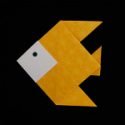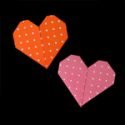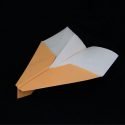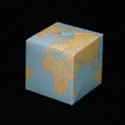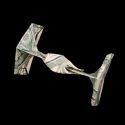Tessellations
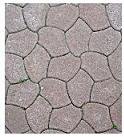
A tessellation (also called tiling) is when shapes are arranged side by side to produce a pattern with no gaps in between. Tessellations have existed since ancient Egyptian times and are still common today in floor and wall tilings. [Photo: pavement tessellation from wikipedia.com]
The simplist tessellations are the “regular tessellations” where only one shape is used. In order for the shapes to be flush one against another, the shape must be either a triangle, a square, or a hexagon. [Photo: the three possible types of regular tessellations from wikipedia.com].

Tessellations can be made with two or three shapes. These are called semiregular and demiregular tessellations. Tessellations can also be made with irregular shapes.
 Most tessellations have a pattern that repeats itself over and over again but some tessellations, like the ones discovered by Robert Penrose do not repeat. These are called “aperiodic tessellations“.
Most tessellations have a pattern that repeats itself over and over again but some tessellations, like the ones discovered by Robert Penrose do not repeat. These are called “aperiodic tessellations“.[Photo: an aperiodic tessellation from wikipedia.com].
Visit these sites for more information:
- Suzanne Alejandre and coolmath.com have good educational sites.
- make your own Escher-like tessellations at mathcats.com.
- David Annal’s site has a good tessellation database has a list of contemporary tessellations created by modern artists.
Origami Tessellations
can be regular (triangles, hexagons) or irregular (parallelograms, trapezoids). They are all periodic (repeating pattern).
- go to Origami Tessellations
- go to Origami Quilts
-
Books with Easy Origami
- Easy Origami: over 30 simple projects by John Montroll
- Origami Fun Kit for Beginners by John Montroll
- My First Origami Kit by Joel Stern
- Easy Origami: A Step-by-Step Guide for Kids by C Alexander & M Meinking
- Fun With Easy Origami (Dover Origami Papercraft)
- Origami: A Step-by-Step Introduction to the Art of Paper Folding by T Cook & S Henry
- Easy Origami For Kids Book Traditional Japanese Folding Papers Overs 20 Projects by J Wish
- Easy Origami for Kids: Over 40 Simple Origami Projects by O Brooks
Please Help
Please help by reporting broken links so that we can fix them. One easy message from you can save us hours and hours of clicking. Thanks!
-
More Origami Diagrams and Instructions…
-
These free origami instructions are made available to you by the paper folding community at large. If you have a diagram you would like to share, or if your diagram is listed here and you wish to have it removed, please Contact Us. Diagrams are intended for personal use. Copyright of the models lie with the origami creators and designers. Please contact the designer and/or creator directly for non-private usage of a model and/or artwork.









